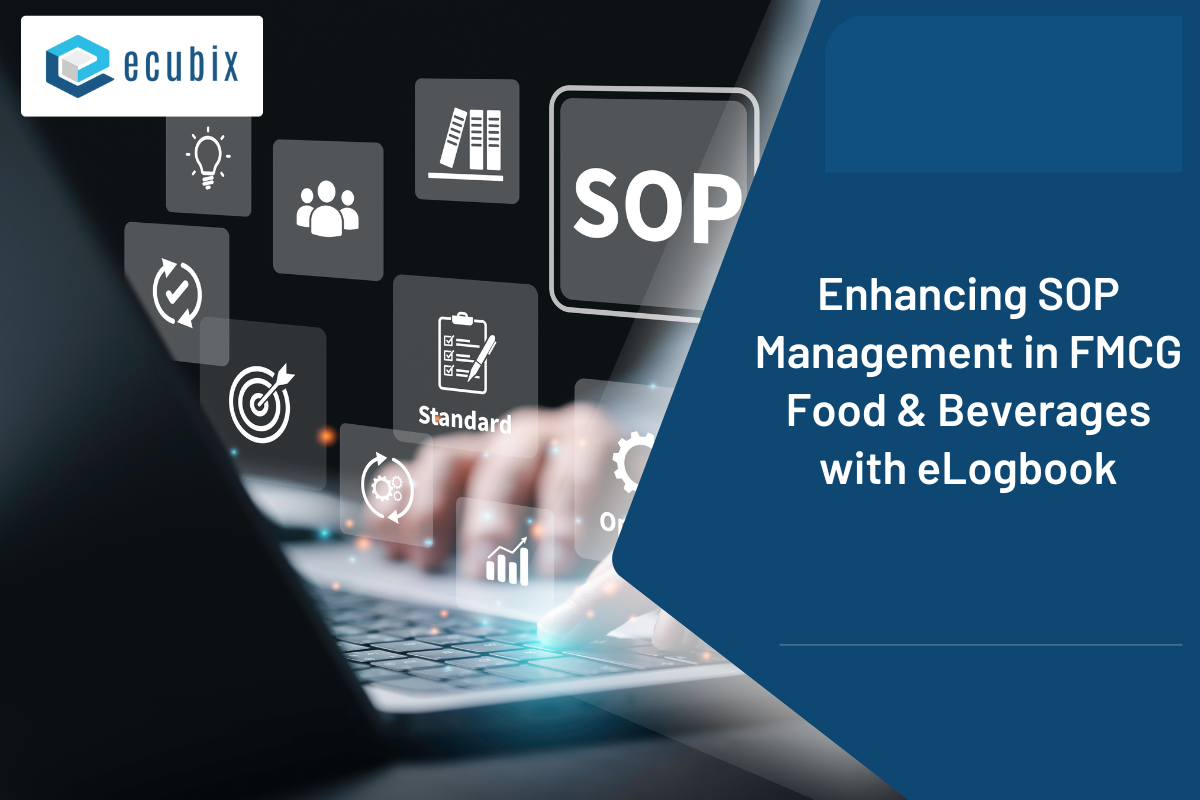
Table of Contents
Published on: August 28, 2024
Manufacturing plants face significant safety challenges due to the complex nature of operations, heavy machinery, and hazardous materials. According to the Bureau of Labor Statistics, manufacturing accounted for nearly 15% of all private industry nonfatal injuries and illnesses in 2022, highlighting the sector’s vulnerability. These safety challenges necessitate stringent monitoring and record-keeping to ensure compliance and prevent accidents.
Importance of Maintaining Accurate Records for Safety Compliance
Accurate records are vital for safety compliance in manufacturing plants. Regulatory bodies, such as OSHA (Occupational Safety and Health Administration), mandate detailed record-keeping of safety incidents, equipment maintenance, and employee training. Inaccurate or incomplete records can lead to regulatory fines, legal liabilities, and increased risk of accidents. A study by the National Safety Council found that companies with comprehensive safety records experienced 37% fewer accidents than those with poor record-keeping practices.
Introduction to Electronic Logbook (eLogbook) as a Solution
An electronic logbook (eLogbook) is a digital platform designed to replace traditional paper-based logbooks. It allows for real-time data entry, automated tracking, and instant access to historical records. By utilizing an electronic logbook (eLogbook), manufacturing plants can enhance their safety protocols, ensure compliance with regulatory requirements, and significantly reduce the likelihood of safety incidents.
Current Safety Challenges in Manufacturing Plants

(1) Inadequacies of Traditional Paper-Based Logbooks
Traditional paper-based logbooks have been a standard tool in manufacturing plants for decades. However, they present numerous challenges, such as the risk of human error, difficulties in retrieving historical data, and the potential for data loss or tampering. A survey conducted by Industry Week revealed that 64% of manufacturing plants still rely on paper-based logbooks, yet 45% of those report issues with data accuracy and completeness.
(2) Common Safety Issues and Incidents in Manufacturing
Manufacturing environments are prone to various safety issues, including machinery malfunctions, exposure to hazardous substances, and human errors. According to the National Institute for Occupational Safety and Health (NIOSH), manufacturing workers are five times more likely to suffer from workplace injuries than those in other sectors. These incidents are often exacerbated by the lack of timely data and accurate safety records.
(3) The Need for Real-Time Monitoring and Data Accuracy
In today’s fast-paced manufacturing environment, real-time monitoring and data accuracy are critical for preventing accidents and ensuring safety compliance. The ability to instantly access and analyze data allows safety managers to identify potential hazards, respond quickly to incidents, and implement preventive measures. A study by Deloitte found that manufacturers who implemented real-time data monitoring experienced a 30% reduction in safety incidents within the first year.
Regularly inspect the workplace to identify and address potential hazards before they cause harm.
Manufacturing plants are the backbone of our economy, but they also pose significant safety challenges. It’s time to take proactive steps to ensure the well-being of every worker.
Request a free demo today and unlock the potential of eLogbook.
What is an Electronic Logbook (eLogbook)?
An electronic logbook (eLogbook) is a digital system that records, stores and manages safety data in real-time. It functions as a centralized platform where safety incidents, equipment maintenance, employee training, and compliance records are logged and monitored. Features typically include automated data entry, alert systems for non-compliance, and integration with other safety management tools.
Comparison Between Electronic and Traditional Logbooks
Compared to traditional paper-based logbooks, electronic logbook (eLogbook) offers numerous advantages. They eliminate manual data entry errors, provide instant access to historical data, and ensure data integrity with secure, time-stamped entries. While paper logbooks can be lost, damaged, or altered, electronic logbook (eLogbook) provide a reliable and tamper-proof solution. According to a report by Aberdeen Group, companies that switched to electronic logbook (eLogbook) saw a 50% improvement in data accuracy and a 40% reduction in the time spent on audits.
Benefits of Using Electronic Logbook (eLogbook) in a Manufacturing Setting
Electronic logbook (eLogbook) offers several benefits in a manufacturing setting, including:
- Increased Efficiency: Automated data entry and real-time updates reduce the time and effort required for record-keeping.
- Enhanced Compliance: Instant alerts and automated reporting help ensure compliance with safety regulations.
- Improved Safety Outcomes: With accurate, up-to-date data, safety managers can make informed decisions that reduce the risk of accidents.
Role of Electronic Logbook (eLogbook) in Enhancing Safety

(1) Real-Time Data Collection and Monitoring
One of the primary benefits of an electronic logbook (eLogbook) is its ability to collect and monitor data in real-time. This capability ensures that safety incidents are reported immediately, allowing for prompt response and mitigation. For example, if a machine malfunction occurs, the electronic logbook (eLogbook) can automatically notify the relevant personnel, ensuring quick action is taken to prevent injuries.
(2) Immediate Reporting of Safety Incidents
An electronic logbook (eLogbook) enables immediate reporting of safety incidents, which is crucial for maintaining a safe work environment. The system can automatically generate and send incident reports to safety managers, ensuring that no incident goes unnoticed. A survey by EHS Today found that 72% of safety managers using electronic logbook (eLogbook)s reported faster response times to safety incidents compared to traditional methods.
(3) Instant Updates on Safety Measures and Compliance
With an electronic logbook (eLogbook), safety measures and compliance updates can be instantly communicated across the organization. This ensures that all employees are aware of the latest safety protocols and regulations. A report by Verdantix found that manufacturers using electronic logbook (eLogbook) were 35% more likely to stay compliant with safety regulations than those using paper-based systems.
(4) Improved Accuracy and Reduced Human Error
(i) Automated Data Entry and Logging
Electronic logbook (eLogbook) automates data entry, reducing the likelihood of human error. Automated systems can capture data directly from machines and sensors, ensuring that records are accurate and consistent. This automation is particularly beneficial in environments where multiple safety checks and logs are required daily. According to a study by ARC Advisory Group, automation of data entry through electronic logbook (eLogbook) improved accuracy by 45%.
(ii) Elimination of Manual Errors and Data Falsification
Manual errors and data falsification are common issues with traditional logbooks. Electronic logbook (eLogbook) addresses these problems by providing secure, time-stamped entries that cannot be altered or deleted without proper authorization. This feature not only improves data integrity but also deters fraudulent practices. A survey by the Manufacturing Leadership Council found that 60% of manufacturers using electronic logbook (eLogbook) reported a significant reduction in data falsification incidents.
(5) Enhanced Traceability and Accountability
(i) Secure Storage of Log Entries
An electronic logbook (eLogbook) provides secure storage of log entries, ensuring that data is protected from loss, damage, or unauthorized access. These systems typically offer encryption and regular backups, making them far more reliable than paper-based logbooks. A report by Tech-Clarity found that manufacturers using electronic logbook (eLogbook) experienced 30% fewer instances of lost or damaged records.
(ii) Easy Retrieval of Records for Audits and Inspections
The ability to easily retrieve records is another key advantage of an electronic logbook (eLogbook). During audits or inspections, safety managers can quickly access and present the required documentation, saving time and reducing stress. According to a survey by LNS Research, manufacturers using electronic logbook (eLogbook) reduced their audit preparation time by 40% on average.
Conclusion
Enhancing safety measures with an Electronic Logbook (eLogbook) in manufacturing plants is crucial for improving workplace safety and operational efficiency. An eLogbook is a digital checklist that enables real-time recording and monitoring of safety-related activities, incidents, and equipment status. eLogbook provides a transparent record of safety activities, enhancing accountability among staff and management. This transparency has been linked to a 15% improvement in safety culture within organizations using eLogbook. Companies using eLogbook report up to a 25% reduction in workplace accidents due to data-driven safety enhancements. Immediate data entry and accessibility help in quicker identification and rectification of safety hazards.



















